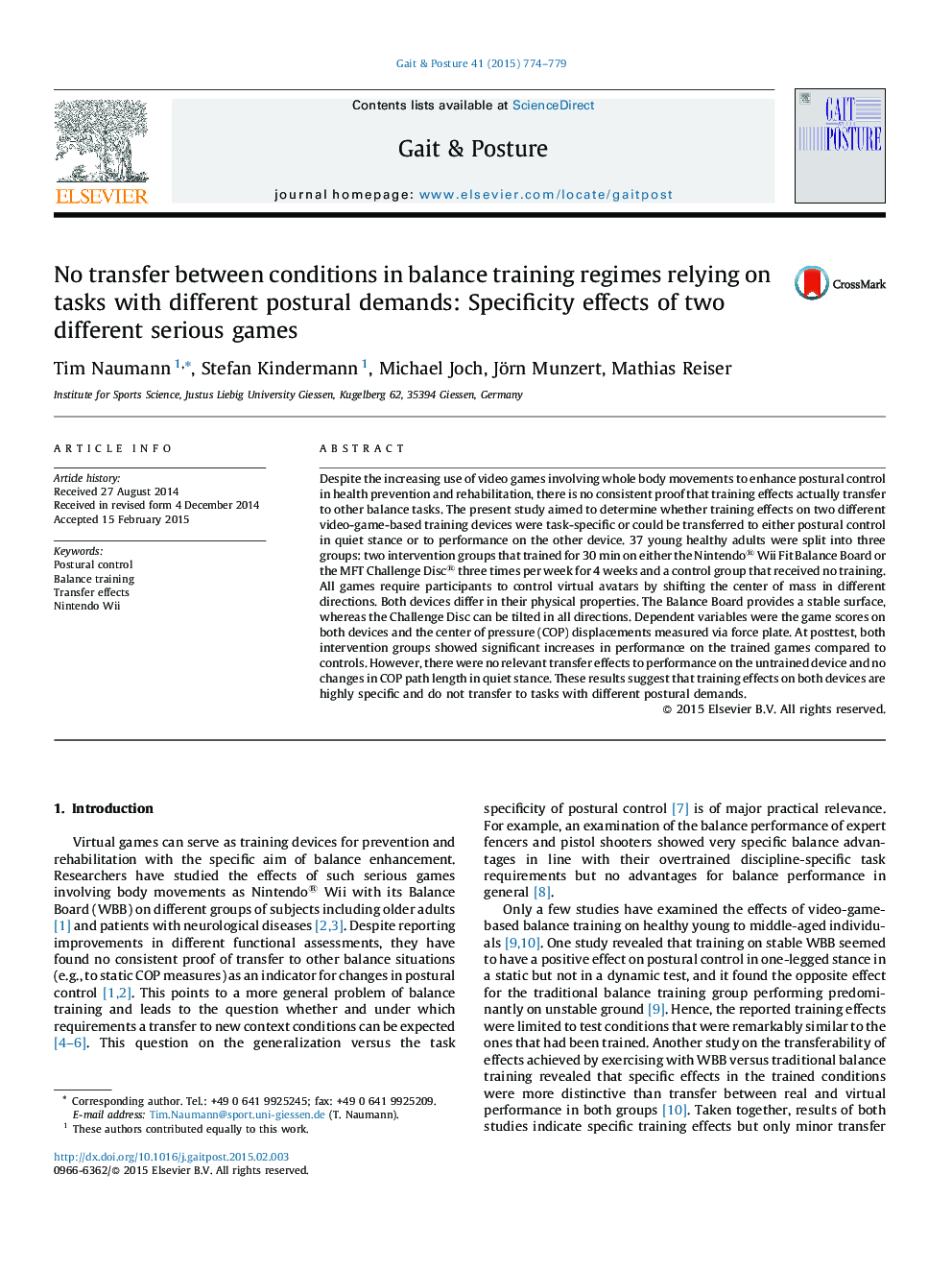| Article ID | Journal | Published Year | Pages | File Type |
|---|---|---|---|---|
| 6206234 | Gait & Posture | 2015 | 6 Pages |
â¢We compare effects of two different video-game-based training devices on balance.â¢Cross-transfer effects between devices and transfer to quiet stance are examined.â¢Both training groups improve their performance in the trained tasks.â¢Training effects do not transfer to tasks with different postural demands.â¢Balance training effects on both devices are highly task-specific
Despite the increasing use of video games involving whole body movements to enhance postural control in health prevention and rehabilitation, there is no consistent proof that training effects actually transfer to other balance tasks. The present study aimed to determine whether training effects on two different video-game-based training devices were task-specific or could be transferred to either postural control in quiet stance or to performance on the other device. 37 young healthy adults were split into three groups: two intervention groups that trained for 30Â min on either the Nintendo® Wii Fit Balance Board or the MFT Challenge Disc® three times per week for 4 weeks and a control group that received no training. All games require participants to control virtual avatars by shifting the center of mass in different directions. Both devices differ in their physical properties. The Balance Board provides a stable surface, whereas the Challenge Disc can be tilted in all directions. Dependent variables were the game scores on both devices and the center of pressure (COP) displacements measured via force plate. At posttest, both intervention groups showed significant increases in performance on the trained games compared to controls. However, there were no relevant transfer effects to performance on the untrained device and no changes in COP path length in quiet stance. These results suggest that training effects on both devices are highly specific and do not transfer to tasks with different postural demands.
